Tools Required
Removal Procedure
Caution: Refer to Brake Dust Caution in the Preface section.
Notice: A new brake drum must have the protective coating removed from the friction surface before being placed in service. Use denatured alcohol or an equivalent
approved brake cleaner, and wipe the surface clean with clean cloths. Do not use gasoline, kerosene or other oil base solvents that can leave an oily residue. This residue is damaging to brake linings and is flammable.
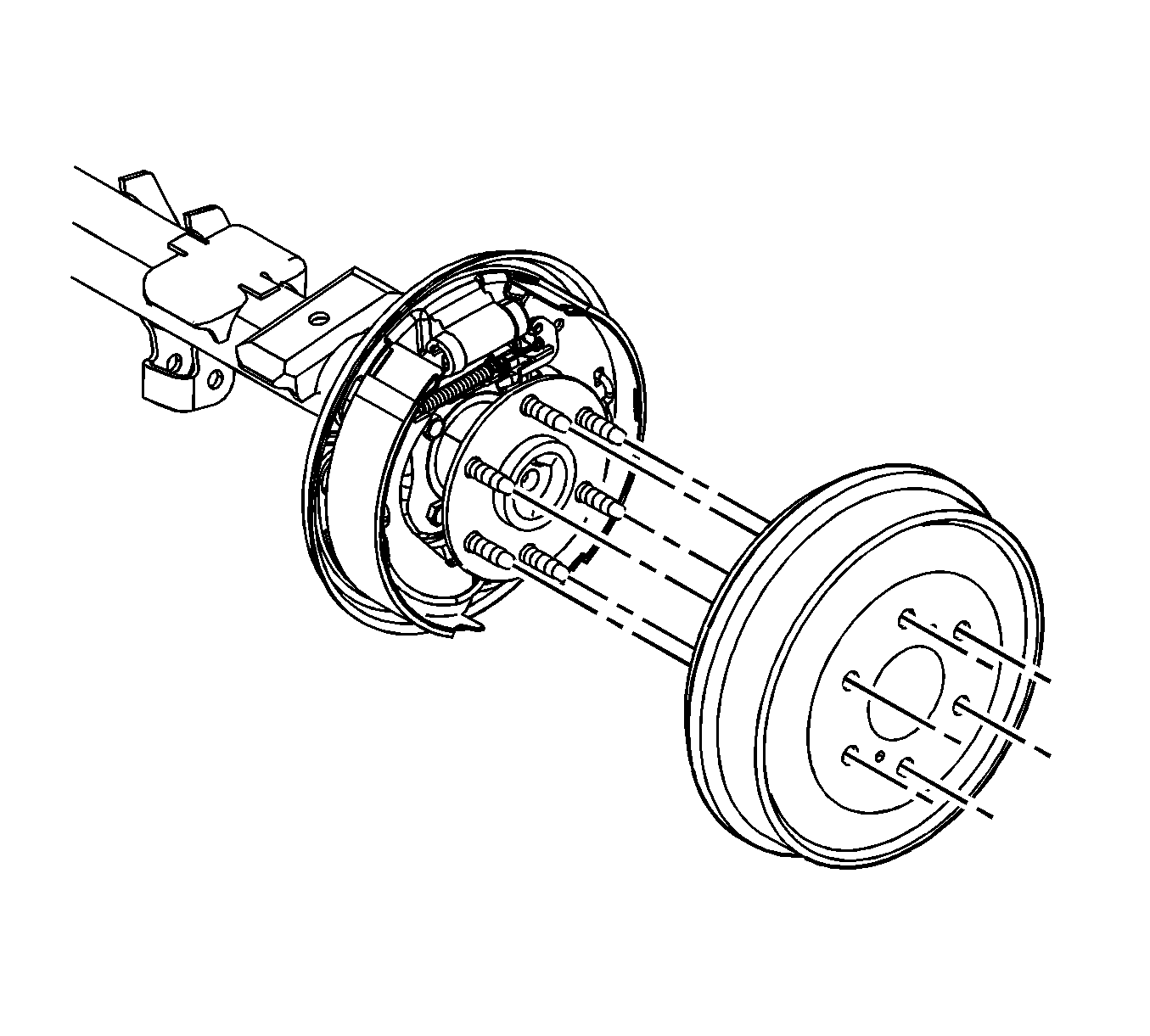
- Remove the rear tire and wheel. Refer to
Tire and Wheel Removal and Installation
.
- Remove the rear brake drum retainer, if necessary.
Important: Before removing the brake drum, apply a small amount of penetrating oil around the wheel studs, axle shaft hub and brake drum.
- Remove the rear brake drum.
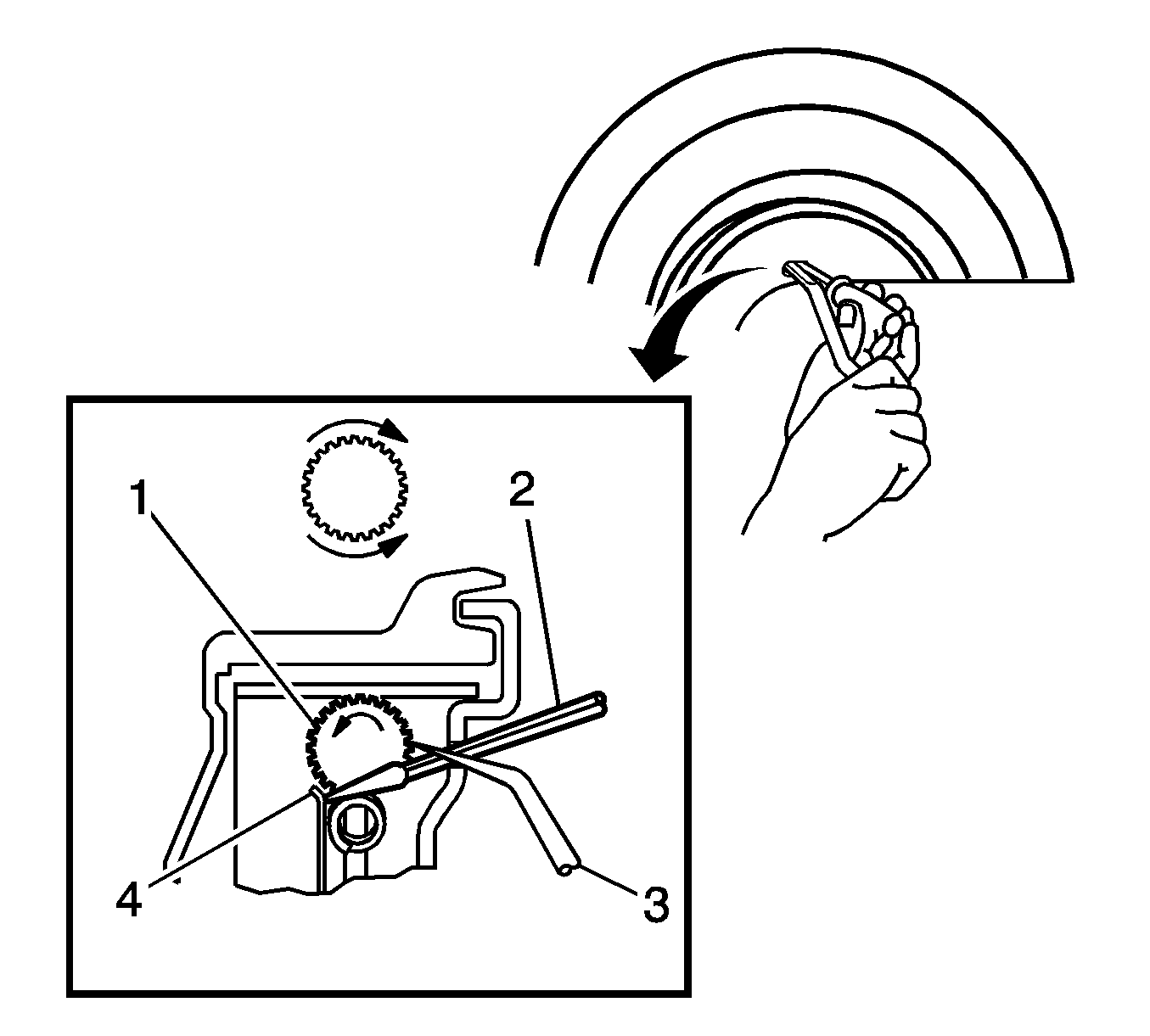
- If the brake drum cannot be removed, perform the following:
| 4.1. | Remove the rubber plug from the backing plate. |
| 4.2. | Insert a screwdriver (2), until contact has been made with the adjuster lever (4). |
| 4.3. | Slightly push the adjuster lever (4) away from the adjuster (1). |
| 4.4. | Using a second screwdriver (3), rotate the adjuster (1) in a upward motion until the adjuster is seated. |
| 4.5. | Remove the brake drum. |
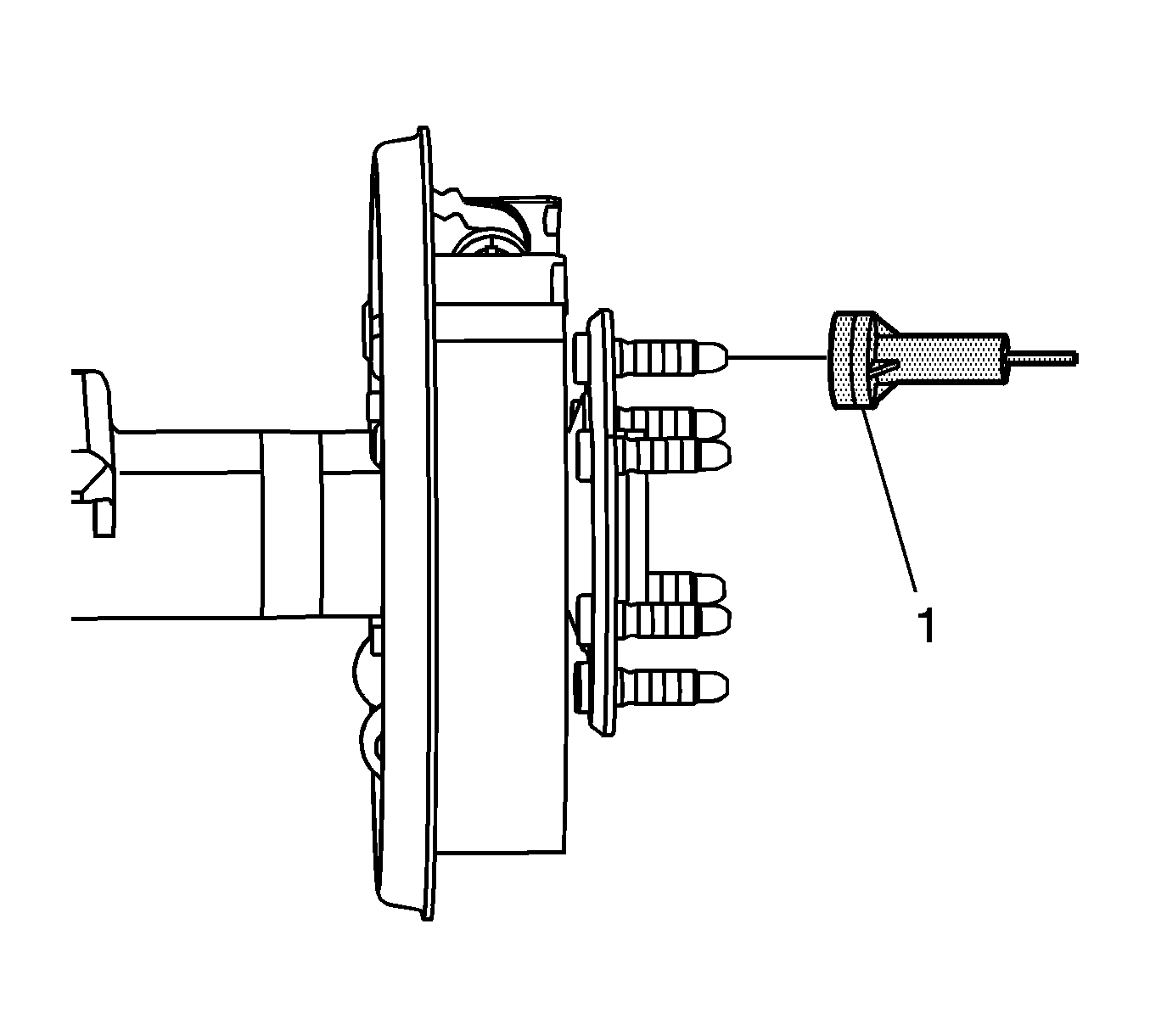
- Using the
J 42450-A
, clean the mating surface between
the rear axle flange and brake drum.
Installation Procedure
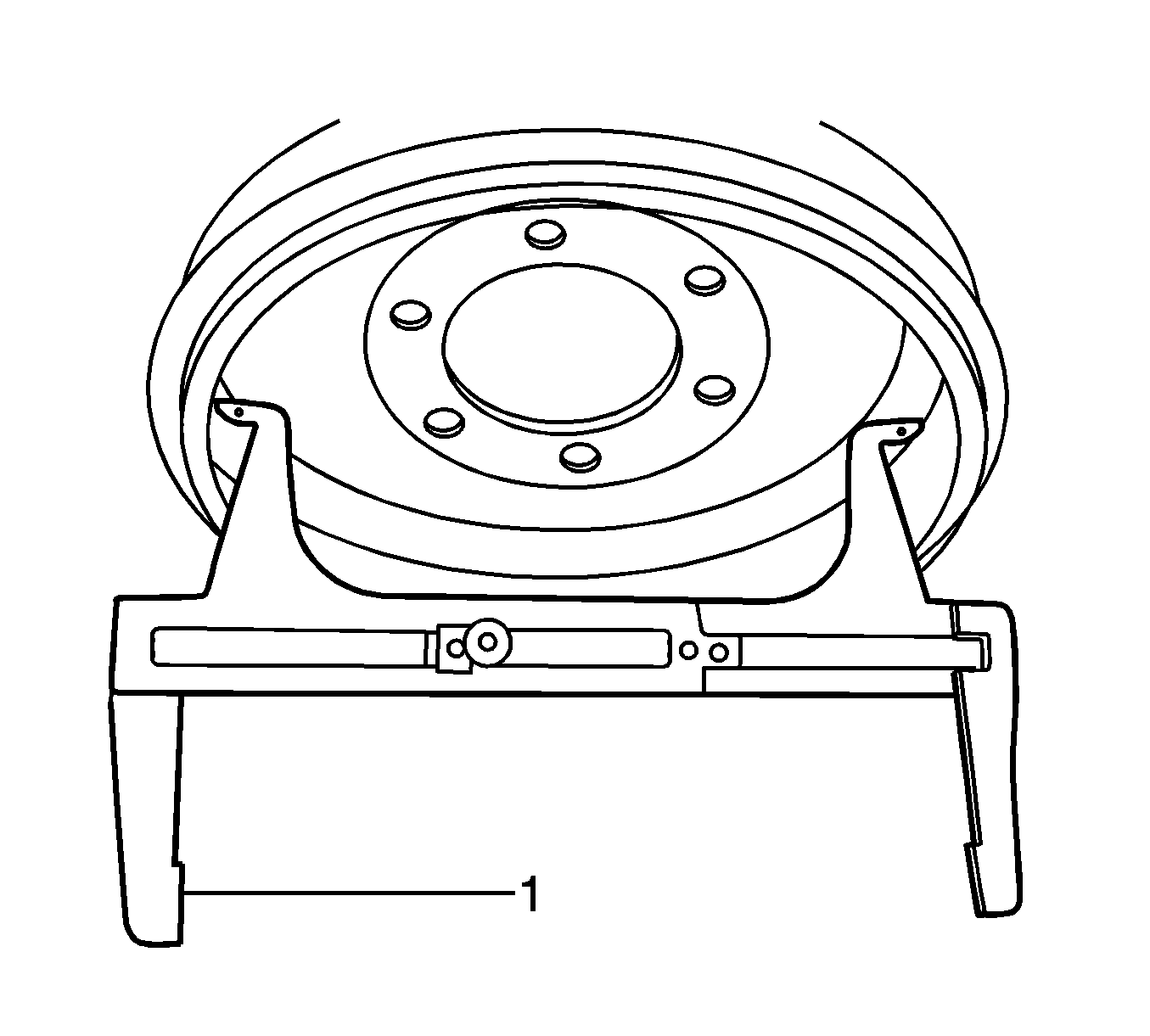
- Using the
J 22364-01
(1), measure the brake drum.
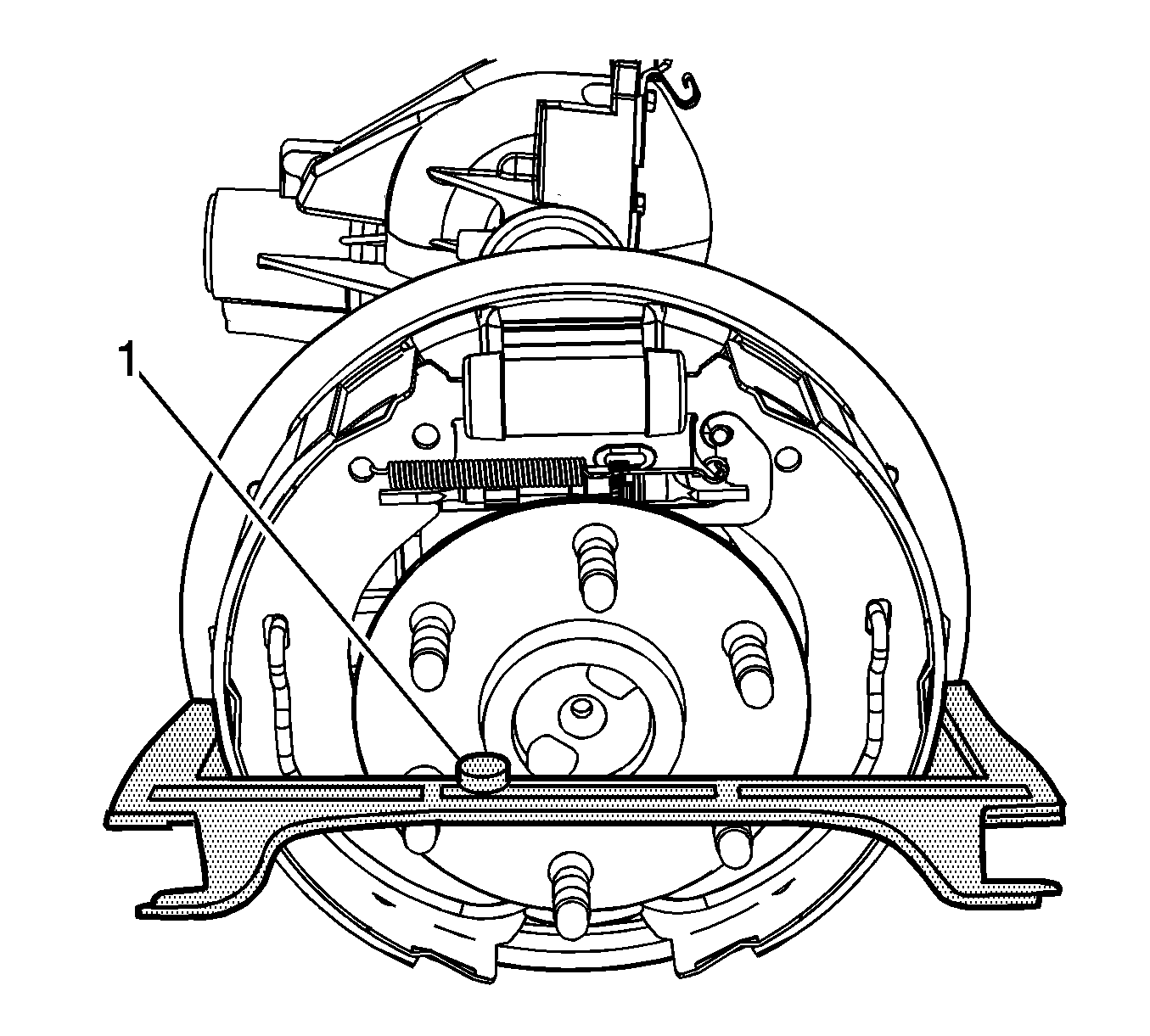
- Using the
J 22364-01
(1),
adjust the rear brake shoes.

- Install the rear brake drum.
- Install the rear tire and wheel. Refer to
Tire and Wheel Removal and Installation
.






